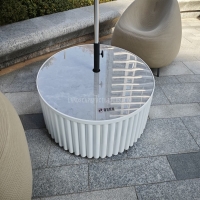Welcome to the website for landscape facilities products and knowledge.
How does eucalyptus handle temperature fluctuations in landscape sculpture?
Eucalyptus trees, renowned for their resilience and aesthetic appeal, are a popular choice in landscape sculpture. Their ability to handle temperature fluctuations stems from several unique adaptations.
Firstly, eucalyptus leaves contain oils that reduce water loss, helping the tree conserve moisture during hot spells. The thick, waxy cuticle on the leaves further insulates against extreme temperatures.
In cold conditions, eucalyptus species like Eucalyptus pauciflora can withstand frost due to their hardy cell structure and ability to shed damaged leaves, promoting new growth. Their deep root systems also stabilize soil temperature, buffering against sudden changes.
For landscape sculptures, selecting the right eucalyptus variety is key. Drought-tolerant species thrive in warm climates, while cold-hardy types suit temperate regions. Proper placement—such as avoiding low-lying frost pockets—enhances their survival.
By leveraging these natural adaptations, eucalyptus trees remain vibrant and structurally sound in dynamic environments, making them ideal for artistic and functional garden designs.
Related search:

Recommendation
Round metal tube border design table with tempered glass or granite countertop on the top.